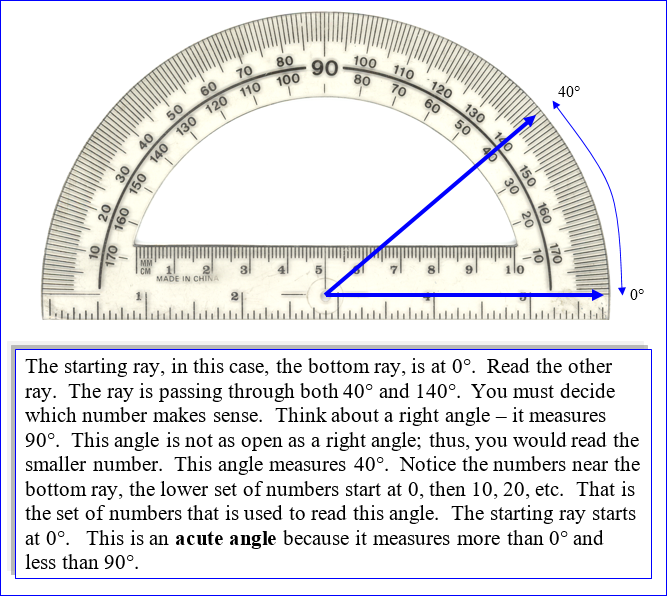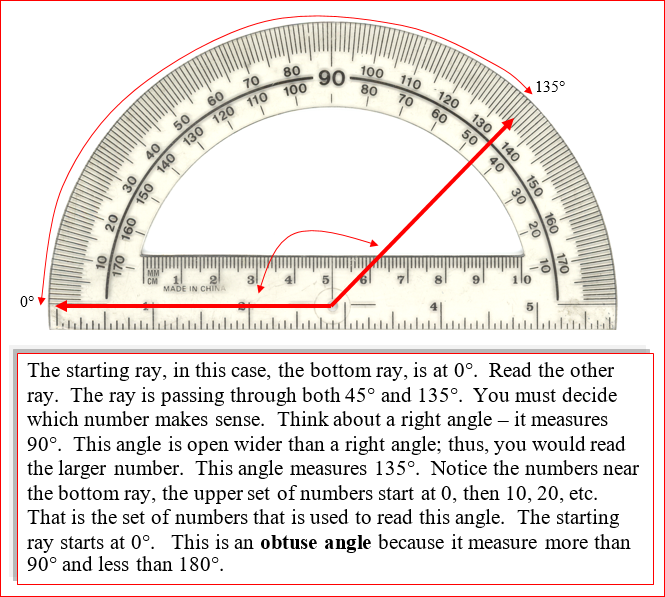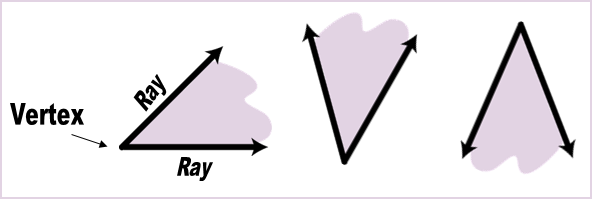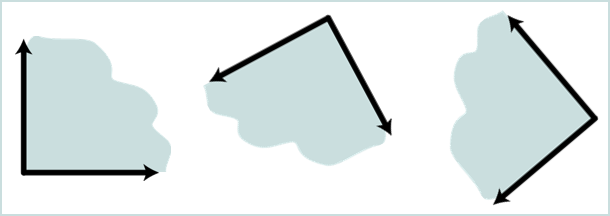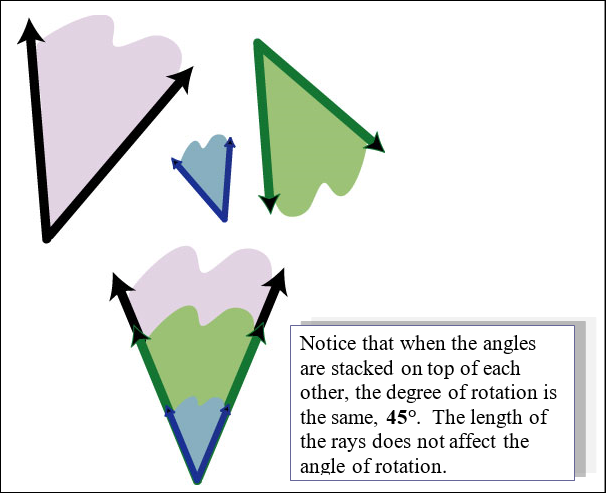Parts and Properties of an Angle
An angle is formed when two rays meet at a common point called the vertex.
The measure of an angle is the amount of circular rotation about a point starting with a ray and ending with a second ray. For this angle, the measure is 80°.
The area within the two rays is called the interior of an angle, represented by the green shading in the picture. The area outside the two rays is called the exterior of an angle, represented by the yellow shading in the picture.
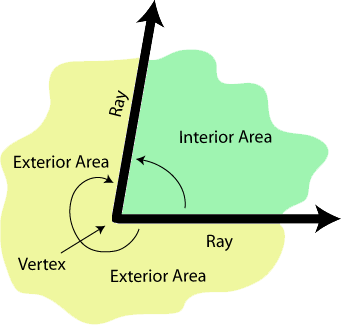 |
